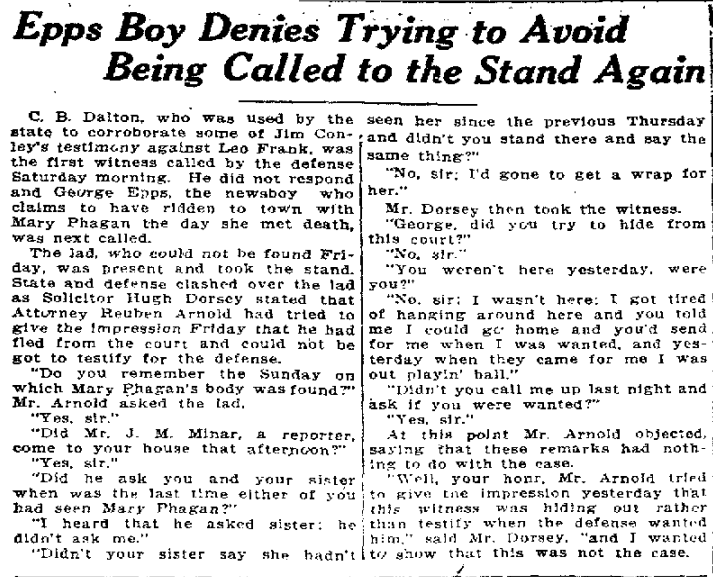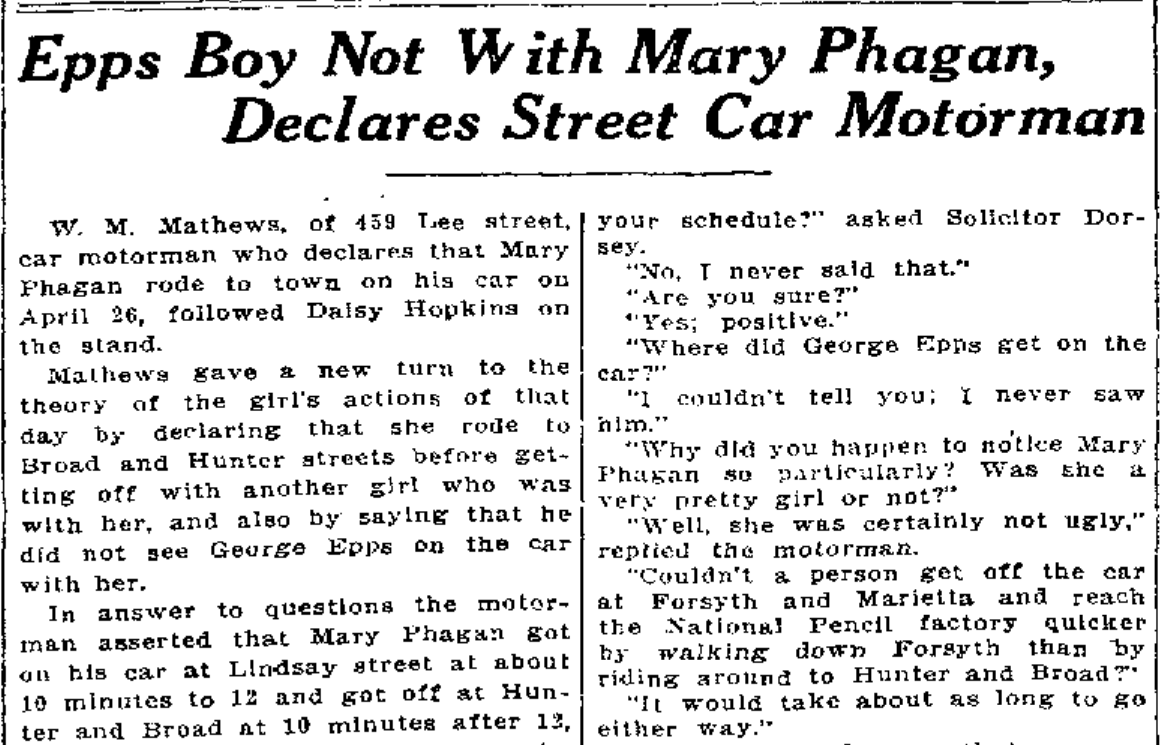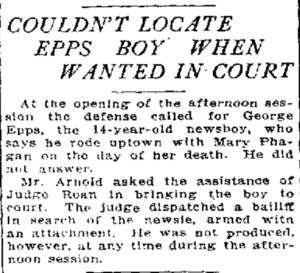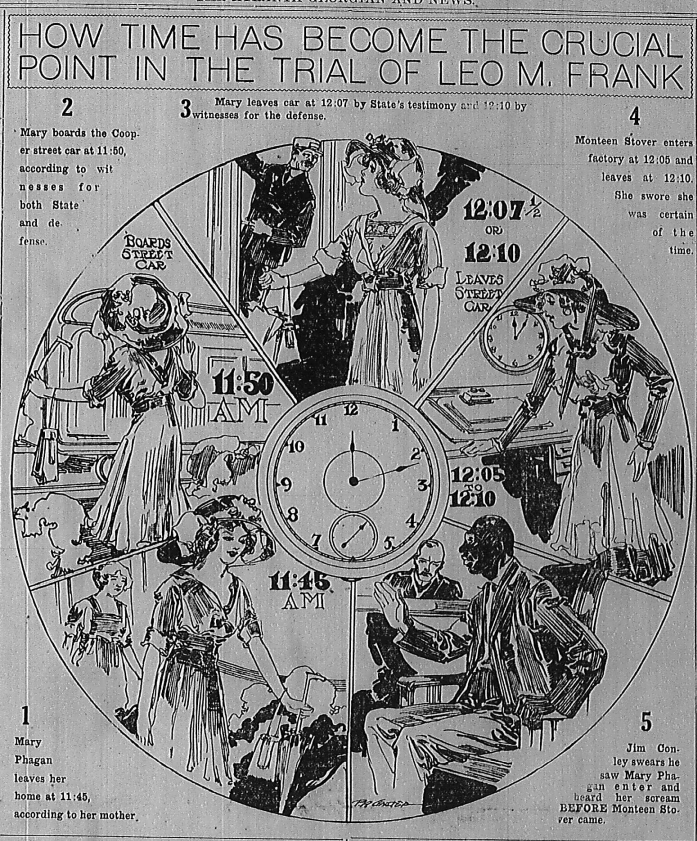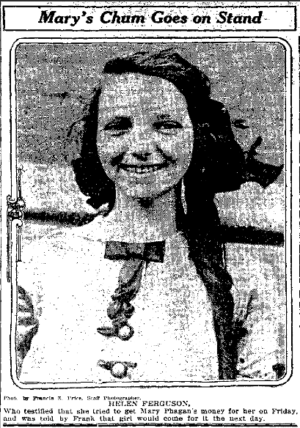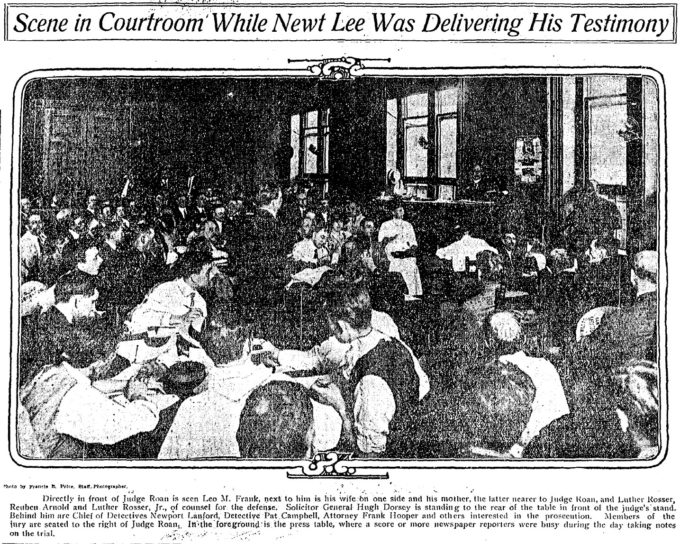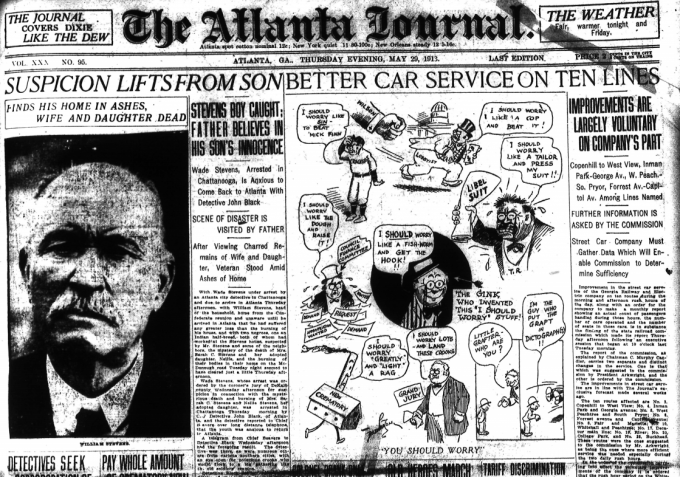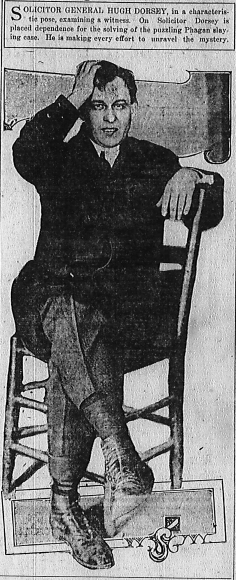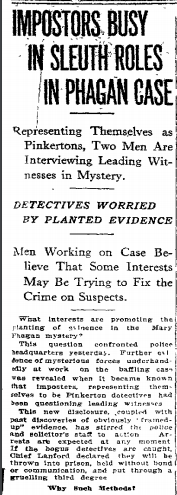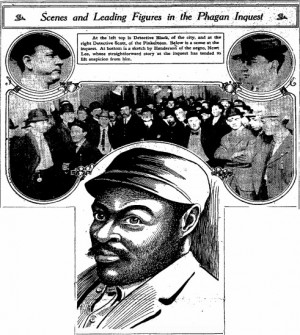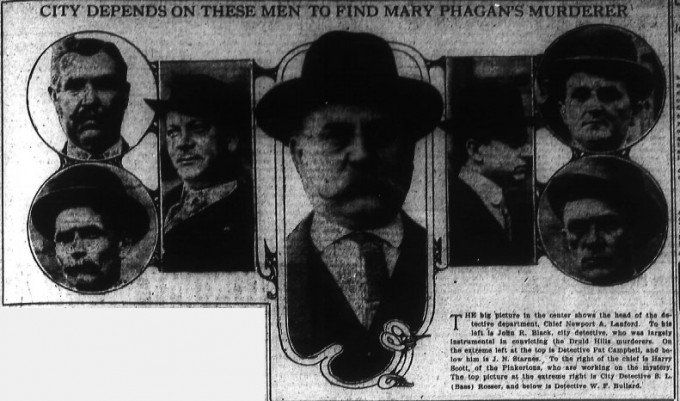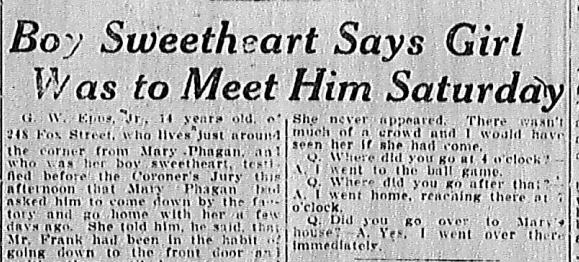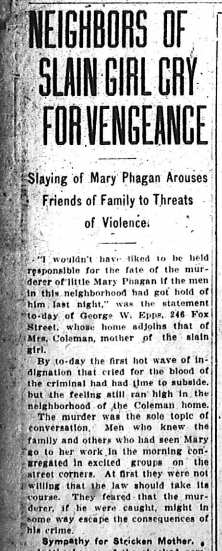Another in our series of new transcriptions of contemporary articles on the Leo Frank case.
Atlanta Constitution
August 10th, 1913
J. M. Minar, a reporter, was put on the stand by the defense after the Epps boy left. By him the defense sought to prove that the boy had talked of Mary Phagan and had not mentioned seeing her on the car.
Before he had finished cross-examining him Attorney F. A. Hooper sought to create the impression on the jury that The Georgian, for which Minar works, had instructed him to discover as much news favorable for Leo Frank as possible, and Mr. Arnold entered an objection at once.
“Did you go to the Epps’ home on Sunday afternoon, the day the dead girl’s body was found?” was Mr. Arnold’s opening question.
“Yes,” replied Minar.
“Did you see George Epps and his sister?”
“Yes.”
“Did you ask them together?”
“Yes.”
“Please state what, if anything, they answered.”
“The sister said she had last seen Mary Phagan on Thursday and the boy told he frequently rode to town with her in the mornings,” replied the witness.
Continue Reading →

